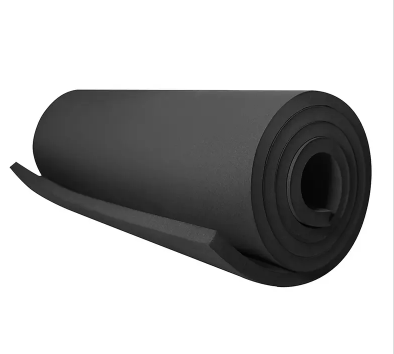+86-18950152610
Please Choose Your Language


Views: 0 Author: Site Editor Publish Time: 2025-10-24 Origin: Site










Which rubber is best for your project? CR rubber, also called Neoprene, resists heat and chemicals. SBR rubber offers strong abrasion resistance at lower cost. This guide compares their strengths, applications, and the role of Neoprene Sheet. You'll learn how to choose the right material for lasting performance.
CR, also called Neoprene, resists heat, oils, and harsh weather. It performs well outdoors and in chemical exposure. Its flame resistance and elasticity make it suitable for demanding environments.
Heat and weather resistance
Chemical and oil resistance
Flame resistance and good elasticity
For high-temperature or outdoor exposure, CR offers reliable protection.
CR is versatile across industries. It is widely used in:
Automotive seals, gaskets, and hoses
Industrial hoses and roofing materials
Neoprene Sheet for construction, protective gear, and marine equipment
Neoprene Sheet ensures long-term durability in harsh conditions.
CR outperforms SBR in specific areas:
Excellent chemical and oil resistance
Superior weathering and UV resistance
Longer lifespan under harsh environments
Despite its strengths, CR has drawbacks:
Higher cost than SBR
Slightly lower abrasion resistance
Balance cost with performance requirements when choosing CR.

SBR is valued for its wear resistance and cost-effectiveness. Its moderate heat tolerance limits outdoor applications. Key traits include:
Excellent abrasion resistance
Moderate chemical and heat resistance
Low production cost
SBR is often found in:
Tires and footwear soles
Industrial gaskets, belts, and hoses
General-purpose high-wear applications
SBR is ideal where abrasion resistance and low cost matter more than chemical resistance.
SBR excels in:
Cost-effectiveness for large-scale production
Superior abrasion resistance in dry conditions
SBR's weaknesses include:
Limited chemical and weather resistance
No inherent flame resistance
| Property | CR Rubber (Neoprene) | SBR Rubber |
|---|---|---|
| Heat Resistance | Excellent | Moderate |
| Chemical Resistance | Very high | Limited |
| Abrasion Resistance | Good | Excellent |
| Weather & UV Resistance | Excellent | Moderate |
| Cost | Higher | Lower |
| Elasticity | Good | Better for dynamic uses |
| Flame Resistance | Yes | No |
Use this table to quickly decide material suitability for your projects.
CR excels in harsh chemical and environmental conditions.
SBR provides cost-effective wear resistance for industrial products.
Selection depends on exposure, cost, and durability requirements.
Neoprene Sheet is a form of CR rubber. It delivers high chemical, heat, and weather resistance. Sheets are versatile and easy to fabricate.
Seals, gaskets, and hoses in automotive and machinery
Roofing, insulation, and vibration damping
Protective mats for industrial equipment
Wetsuits, gloves, and knee/elbow pads
Fire-resistant protective layers
Chemical-resistant barriers in labs
Clean with mild detergent, avoid harsh chemicals
Store away from UV light and ozone sources
Inspect periodically for cracks or wear
Proper storage extends the life of Neoprene Sheet and CR components.
Exposure to heat, oils, or chemicals favors CR
High abrasion or cost sensitivity favors SBR
Dynamic applications may require flexible options
Outdoor automotive seals or gaskets
Industrial hoses exposed to chemicals
Protective equipment in harsh conditions
Tires, footwear soles, and conveyor belts
High-wear, low-cost industrial components
Non-chemical-exposed environments
CR: Engine compartment gaskets resist heat and oil
SBR: Conveyor belts withstand mechanical wear
Match rubber type to operational conditions for optimal ROI.
Use UV-protective coatings for outdoor applications
Avoid prolonged exposure to strong acids or bases
Add fillers or compound blends for extra abrasion resistance
Monitor for environmental stress cracking
Layer CR and SBR for products requiring chemical and abrasion resistance
Consider Neoprene Sheet overlays for critical seals
Store away from sunlight and ozone
Keep sheets flat to prevent deformation
Label and track inventory for shelf-life management
Hybrid approaches can optimize performance and cost simultaneously.
Choosing the right rubber depends on your needs. Neoprene Sheet offers excellent chemical, heat, and weather resistance. SBR rubber is ideal for abrasion resistance and cost savings. DGHTXC provides high-quality products that enhance durability and performance. Hybrid solutions combine advantages for optimal results.
A: CR rubber resists heat, chemicals, and weather, while SBR excels in abrasion resistance and cost. This CR vs SBR rubber comparison helps select the right material.
A: Neoprene Sheet is used in automotive gaskets, industrial hoses, and protective gear for chemical and weather resistance.
A: Choose CR for heat, chemical, and UV resistance. SBR is better for wear-heavy, low-cost applications.
